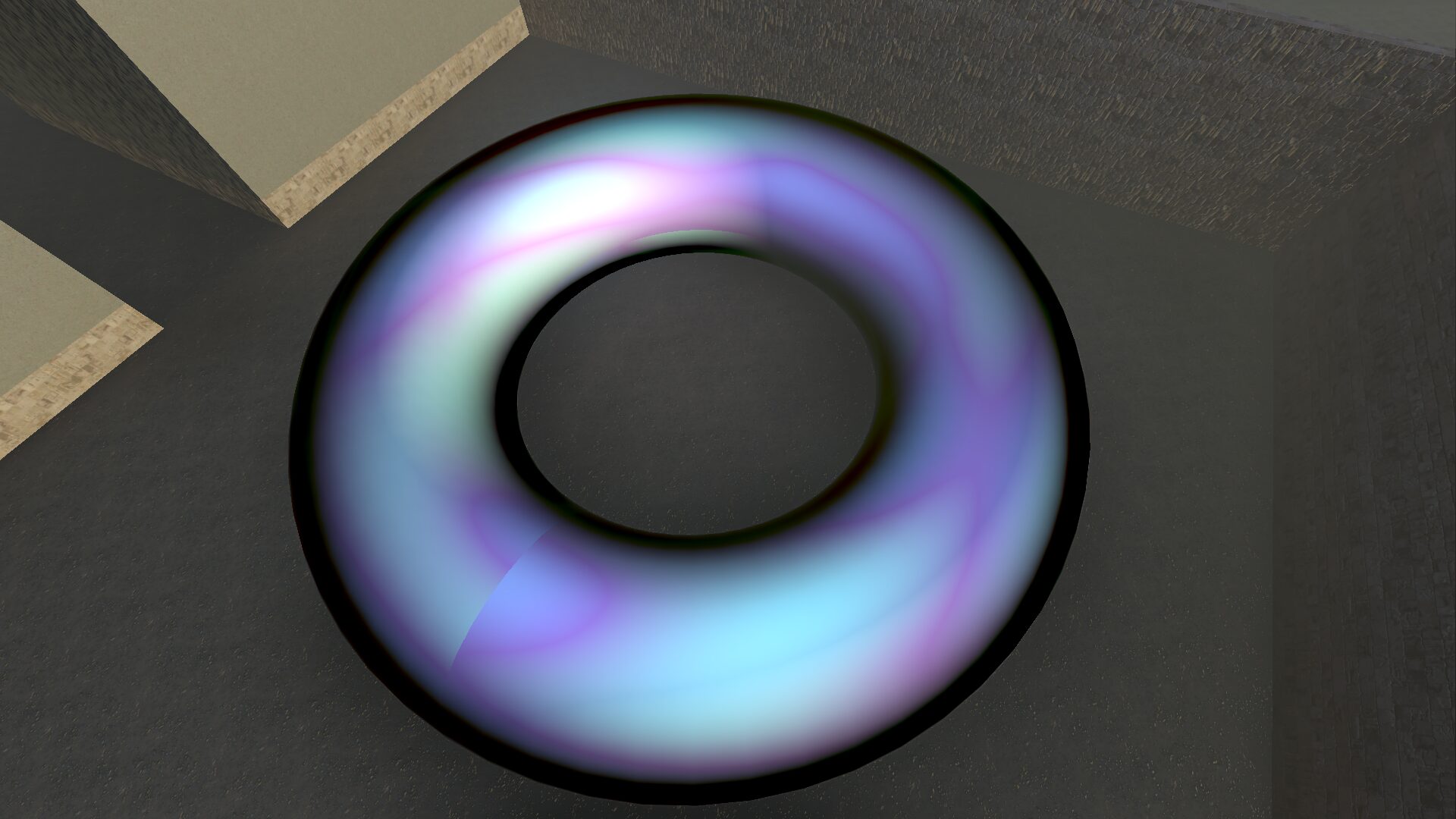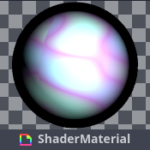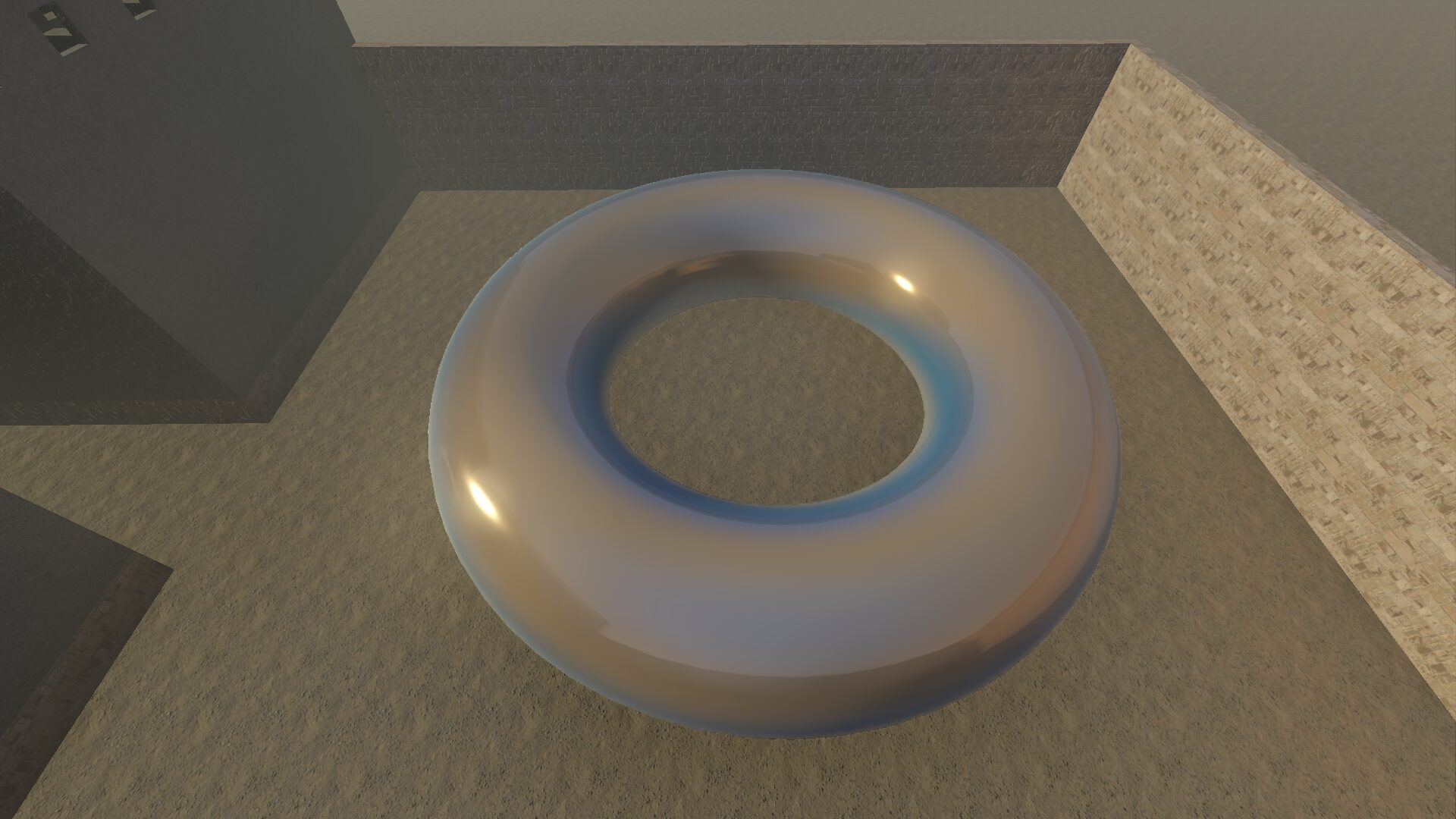Opalescent
Opalescence, like pearlescence, is a property which is caused by microscopic plate separations which refract light. This simulates it. Unlike pearlescence, opal doesn’t depend quite as strongly on the direction of light for its color; but, it can rapidly shift from one hue to another.
Shader code
shader_type spatial;
uniform vec3 base : source_color = vec3(0.2, 0.5, 0.9);
uniform vec3 highlight1 : source_color = vec3(0.9, 0.5, 0.2);
uniform vec3 highlight2 : source_color = vec3(0.6, 1.0, 0.3);
uniform float noise_scale = 10.0;
uniform float roughness = 0.5;
uniform float shift_intensity = 1.0;
vec2 random(vec2 uv){
uv = vec2( dot(uv, vec2(127.1,311.7) ),
dot(uv, vec2(269.5,183.3) ) );
return -1.0 + 2.0 * fract(sin(uv) * 43758.5453123);
}
float noise(vec2 uv) {
vec2 uv_index = floor(uv);
vec2 uv_fract = fract(uv);
vec2 blur = smoothstep(0.0, 1.0, uv_fract);
return mix( mix( dot( random(uv_index + vec2(0.0,0.0) ), uv_fract - vec2(0.0,0.0) ),
dot( random(uv_index + vec2(1.0,0.0) ), uv_fract - vec2(1.0,0.0) ), blur.x),
mix( dot( random(uv_index + vec2(0.0,1.0) ), uv_fract - vec2(0.0,1.0) ),
dot( random(uv_index + vec2(1.0,1.0) ), uv_fract - vec2(1.0,1.0) ), blur.x), blur.y) + 0.5;
}
void fragment() {
//Direction out of mesh along view angle
vec3 V = normalize(-VIEW);
//Quick convenient fresnel simulation
float _fresnel = pow(1.0 - dot(NORMAL, V), 3.0);
vec3 world_pos = (MODEL_MATRIX * vec4(VERTEX, 1.0)).xyz;
float noise_value = noise(UV * noise_scale);
float turbulence = abs(noise_value - 0.5) * 2.0;
ALBEDO = mix(base, highlight1, noise_value);
ALBEDO = mix(ALBEDO, highlight2, turbulence);
float angle_factor = abs(dot(V, NORMAL));
//Assumed to be mixing from black here
ALBEDO = mix(ALBEDO, vec3(0.0), angle_factor * shift_intensity);
//fade out according to roughness
ALBEDO = mix(ALBEDO, vec3(0.0), _fresnel * roughness);
SPECULAR = 1.0 - roughness;
}






